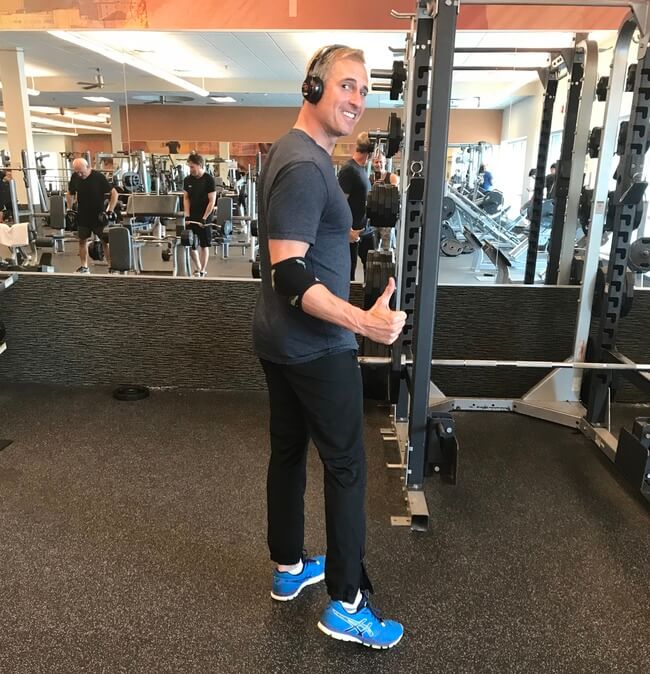
Prolonged sitting is associated with increased risk of cardiovascular disease, stroke, and diabetes. It negatively affects the cardiovascular, lymphatic, and digestive systems, not to mention your metabolism and how your body metabolizes glucose. To add insult to injury, excessive sitting can promote poor posture, muscle imbalances, and stiffness.
Moving, on the other hand, is akin to a superpower; it positively affects all of the systems mentioned above. In addition, it helps manage depression and anxiety, improves mood, reduces brain fog, keeps the brain alive and adaptive, and supports immune health. In fact, the very act of deciding to do something and then doing it provides a much-needed feeling of being in control.
The good news is you don’t need expensive equipment or hours of time to illicit these benefits! The simple act of increasing your step count is associated with reduced all-cause mortality.
Truth time. Are you moving your body on a daily basis? Are you making a conscious effort to weave motion into your schedule? Are you getting your “steps”?
If the answer is “no,” rephrase that to “not yet.” Today is the day that changes.
7 Ways to Sit Less: Design the Life That Serves Your Health
- Create a plan, then make it happen!
Hope is not a strategy. You can’t simply wish your way to sitting less.
You can state ‘til the cows come home, “I will sit less,” but it won’t happen unless you block off time in your schedule, tell the appropriate people your plans, set an alarm to make sure you follow through on your plan, etc.
You need a plan. You need systems that will nudge you in the right direction. You need a schedule.
The same goes for your workouts—schedule them! Will you train in the morning? At lunch? After work? If it’s not in the schedule it won’t happen. Talk to your significant other and figure out the accommodations needed for you each to get some movement time. Your workout can be 5 minutes of dancing a few times a day, a midday gardening excursion, some type of family challenge, or partner yoga.
You do you! Create a plan that works for you … just make sure you schedule it in!
- Set a step goal
Get your baseline, then slowly improve on that number. If you currently take 4,000 steps, work to take 4,500; if you currently take 7,000, work for 7,500.
Set an alarm to remind you to get up and move. When working from home, schedule outdoor mini breaks with your kids (hoola hoop or skipping in the backyard, anyone?), take conference calls as you walk around the neighbourhood, have a dance party, or phone a friend and go for a walk and a chat. Remember, during isolation most of us have lost many of our “lifestyle steps.” You no longer get the built-in steps and mental break of going to buy lunch or walking to an external meeting. You are no longer taking public transit to work, or even walking from your home to the car and from the car to the office. It is up to you to consciously create new rhythms that serve your health. When we all go back to work, schedule lunchtime walks with colleagues, take the long way around the office when you get water, walk to a colleague’s workstation to talk with them instead of phoning, or take the stairs instead of the escalator.
Just remember: every bit of movement adds up!
- Get a standing or adjustable desk
If your workplace can’t splurge, be creative—use a filing cabinet or a high counter. Make yourself a standing desk out of whatever is available. Alternate standing and sitting throughout the day.
Note: Standing at a standing desk doesn’t magically improve your posture or make it okay to work for long periods without a break. You still have to be mindful of your posture and conscious of scheduling in breaks. Also, assess your footwear. Heels can negatively affect your posture. Instead, wear supportive flats. Or, if you absolutely can’t give up your heels, take them off when standing.
- Make walking fun
Many people find walking boring or too easy, and most of us won’t consistently stop work to make time for things that are not fun (or at least interesting in some way). So, it’s up to you to intentionally make walking more interesting or challenging. Consider listening to an interesting podcast while you walk, making a fun playlist, or mixing it up with fartlek intervals. With fartlek intervals, you pick random landmarks to speed toward. Once you arrive, slow down until you catch your breath and then pick another landmark and go!
- Create a lifeline: Get your friends, family, or colleagues involved!
Motivated by a challenge or external accountability? Create some.
Establish a family health challenge—who can do the most steps, who can do the most pushups throughout the day, or who can work out the most in a month. Or, bond with your colleagues (virtually until the pandemic is over) by tracking steps, workouts, or even vegetable and water consumption.
Not into competition but need outside accountability? Get a fitness buddy—you don’t need to train side by side. Do the same virtual class and report back or compete on technology—think Peloton, Map My Runs, or other fitness apps.
- Embrace the 10-minute rule
Typically, the hardest part of any workout is starting. Moving for 10 minutes often snowballs into moving for longer. The 10-minute rule gives you the ignition boost to just start!
When you don’t want to train, make yourself do something—anything—for 10 minutes. Go for a walk or jog, do some yoga (try Yoga By Adrianne: https://www.youtube.com/user/yogawithadriene), try a Fitness Marshall dance party (https://www.youtube.com/user/TheFitnessMarshall/videos), or grab your resistance bands and start my full-body strength workout (https://www.kathleentrotter.com/2020/04/07/band-exercises/).
If you want to stop after 10 minutes, that’s fine. At least, you will have done something. But most likely, once you start, you’ll just finish your workout.
- When you do have to sit, sit on a stability ball
Sitting on a ball works your core and can help to improve posture and body awareness. You will have to sit up or risk falling. Another option is to place a SitFit and GoFit Core Disk on your chair. Inflatable balance cushions offer many of the same benefits of the ball but are more inconspicuous.
The bottom line is this: motion has to be thought of as a non-negotiable. Move, wherever and whenever possible! Consciously create habits, routines, and rituals that serve you. To paraphrase the famous F.M. Alexander: we don’t determine our future. We determine our habits. Our habits form our destiny.
Create a schedule. Get a standing desk. Set an alarm. Talk with the people in your life—figure out how you will make motion non-negotiable.



Excellent advice and article. My friends and patients get tired of hearing these recommendations. Cheers and keep up the great work Lorne.
Sincerely
Borys aka Dr.C;)